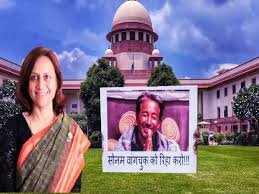Hailing from Allahabad, now Prayagraj, Ali was inadvertently drawn to The Valley often represented in broad strokes of beauty or terror. What struck him the most was, “There is life beyond the shadow of the gun. People have fun, why even we played cricked on its streets, and above all there is hope.” In fact, the talented filmmaker’s earlier feature Shoebox was on his hometown, Allahabad, which he has seen changing so much that it became a friend he grew up with, but could no longer relate to its changing characteristics. Truth of the city is interesting for him, “Allahabad is a fragment of my memory.”
He shares how personification of a city is evident more impactfully in films like Garam Hawa. He observes, “The same city can be seen differently through the gaze of different filmmakers. For instance, the Bombay seen in Ram Gopal Varma’s movies is so different from the one in The Lunchbox. The one in Payal Kapadia’s All We Imagine As Light is again markedly unique.” Only he doesn’t find much difference between the problems of people in different cities. Yes, even those living in the Valley face similar predicaments as any other.
More than facts, he feels its truth which will survive the test of time. Indeed, each person’s vantage point is unique. He states, “Sky is blue is a fact. But I might see sorrow in it, whereas another maker might sense happiness.” Hence, it’s not ‘seeing is believing’ for him but feeling is. As he puts it, “Your gut instinct always tells you what is right.” Interestingly, capturing the film on a mobile phone seemed the right choice for this advertising professional. For it meant the crew didn’t have to drag heavy equipment through snow-laden terrains and reach remote areas. “Choice of equipment complements your story.” Since most actors were facing the camera for the first time, he reveals, “They were not intimidated by a mobile phone as they were quite accustomed to making reels on it.”
Ali’s background in advertising is not the reason why he turned to making films. His cinematic sensibility may not have been shaped by his vocation of making commercials. He opines, “To keep your artistic voice intact, you have to understand the economy of India, which is so different from that of Europe or the US. For, unlike the west we don’t we have the culture of grants.” So, he believes in the axiom, ‘one for the soul and one for the kitchen’, with the later invariably, feeding his artistic integrity. He quips, “Why does a filmmaker have to die in penury?”



















